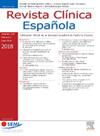西班牙糖尿病患者的慢性肾病评估:内科会诊研究
IF 1.7
4区 医学
Q2 MEDICINE, GENERAL & INTERNAL
引用次数: 0
摘要
目的确定在西班牙内科诊所接受治疗的2型糖尿病患者中慢性肾脏疾病(CKD)的患病率和特征。方法我们收集了来自25家医院的数据,在2024年5月开展的一项观察性研究中招募了354名2型糖尿病患者。收集的信息包括人口统计数据、合并症、营养状况、肌肉减少症和虚弱的存在,以及实验室数据和给予的治疗。结果共纳入314例受试者,其中185例(58.9%);95%可信区间:53.4-64.3%)患有CKD。与无CKD患者相比,CKD患者年龄较大(77.4±9.7岁vs 65.9±12.5岁;P<0.001),男性更常见(53.1 vs. 46.9%;P=0.021),缺血性心脏病患病率更高(22.4%比10.9%;P= 0.006),糖尿病病程更长(14.1±8.6∶10.0±7.0年;术中,0.001)。营养不良(37.3% vs. 25%;P=0.017),肌肉减少症(24.6% vs. 11.2%;P=0.003)和虚弱(74.3 vs 59%;P=0.006)在CKD患者中与无CKD患者相比更常相关。结论内科专家治疗了相当数量的糖尿病和慢性肾病患者。这些人的特点是老年人,心血管疾病的比例高,表现为营养不良、肌肉减少和虚弱,这可以确定代谢控制的目标。本文章由计算机程序翻译,如有差异,请以英文原文为准。
Evaluación de la enfermedad renal crónica en las personas españolas con diabetes: un estudio llevado a cabo en las consultas de medicina interna
Aim
To determine the prevalence and characteristics of chronic kidney disease (CKD) in a cross-sectional population of people with type 2 diabetes treated at internal medicine clinics in Spain.
Methods
We collected data from 25 hospitals which recruited 354 people with type 2 diabetes in an observational study carried out in May, 2024. Information collected included demographic data, comorbidities, nutritional status, presence of sarcopenia and frailty, as well as laboratory data and therapy administered.
Results
We included a total of 314 subjects, of whom 185 (58.9%; 95% confidence interval: 53.4-64.3%) had CKD. Compared with people with no CKD, those with CKD were older (77.4 ± 9.7 vs. 65.9 ± 12.5 years; P<0.001), more often male gender (53.1 vs. 46.9%; P=0.021), with more prevalence of ischemic heart disease (22.4 vs. 10.9%; P=.006) and longer duration of diabetes disease (14.1 ± 8.6 vs. 10.0 ± 7.0 years; P<0.001). Malnutrition (37.3 vs. 25%; P=0.017), sarcopenia (24.6 vs. 11.2%; P=0.003), and frailty (74.3 vs. 59%; P=0.006) was more often associated in people with CKD compared with those with no CKD.
Conclusion
Internal medicine specialists treat a significant number of people with diabetes and CKD. These people are characteristically elderly, with high proportion of cardiovascular disease showing malnutrition, sarcopenia, and frailty, which could determine the target for metabolic control.
求助全文
通过发布文献求助,成功后即可免费获取论文全文。
去求助
来源期刊

Revista clinica espanola
医学-医学:内科
CiteScore
4.40
自引率
6.90%
发文量
73
审稿时长
28 days
期刊介绍:
Revista Clínica Española published its first issue in 1940 and is the body of expression of the Spanish Society of Internal Medicine (SEMI).
The journal fully endorses the goals of updating knowledge and facilitating the acquisition of key developments in internal medicine applied to clinical practice. Revista Clínica Española is subject to a thorough double blind review of the received articles written in Spanish or English. Nine issues are published each year, including mostly originals, reviews and consensus documents.
 求助内容:
求助内容: 应助结果提醒方式:
应助结果提醒方式:


